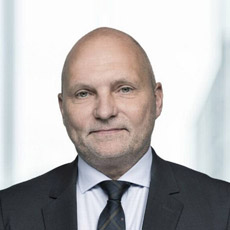FUEL
Maersk’s methanol mission: a greener future for shipping
With the shipping industry constantly working towards achieving a greener future, Maersk and Hyundai Mipo Dockyards are making headway with the world’s first methanol fuelled container. Frankie Youd speaks to Ole Graa Jakobsen, head of fleet technology, A.P. Moller-Maersk, to find out more about the vessel, when construction is planned to commence, and why this new fuel has been selected over other green fuels on the market.
Image: copyright
Acting as the backbone for global trade, shipping provides essential products, materials, and services to millions around the world. However, the environmental effects of shipping are highly detrimental to the environment with the industry being responsible for more than 18% of some air pollutants.
Alongside this, the International Maritime Organisation has estimated that CO2 emissions from shipping were equivalent to 2.2% of the global human-made emissions in 2012, which are expected to rise 50%-250% by 2050 if no action is taken.
With this in mind, the shipping industry has been striving towards cleaner fuel use and alternative energy means, such as liquid natural gas or dual fuel-powered ships. Shipping giant Maersk is following suit, by announcing the world’s first methanol-fuelled container.
The contract signed between Maersk and Hyundai Mipo sees Hyundai Mipo building a feeder vessel that has dual engine technology, allowing the ship to sail on either the new methanol fuel or traditional low-sulphur fuel. The methanol propulsion configuration for the new vessel will be developed by MAN Energy Solutions and Hyundai Engine Machinery.
Alongside the development of this vessel, it has been reported that more than half of Maersk’s customers have set or are in the process of setting ambitious zero carbon targets for their supply chains – reducing their impact on the environment.

Ole Graa Jakobsen, head of fleet technology, A.P. Moller-Maersk
Frankie Youd: When did the discussion for this design first come about?
Ole Graa Jakobsen: For this vessel, we took a different approach, as we applied a ship design that would fit the methanol main engine size already available on the market today. Usually, the process would be the other way around.
This way, we are fast-tracking a green methanol solution for real-life operation, which is de-risked by the use of known technology, while demonstrating that we can act already now in terms of deploying truly scalable carbon-neutral solutions in shipping. Further, this approach allows us to gain valuable operational experience, which is key in building the scale we will need in the future.
What is the current status of the container ship; when does construction hope to take place?
The current status is that we have signed a contract for building this 2100 TEU methanol feeder. The next step is for Hyundai Mipo Dockyards, in collaboration with us at Maersk, to work on the more concrete renderings of the vessel.
Why was it decided that the vessel will have dual engine technology?
A.P. Moller-Maersk has set an ambition to have carbon-neutral operations by 2050. In order to deliver on our ambition, we must begin transitioning to green fuels such as green biomethanol and e-methanol.
We have announced that all our future newbuild vessels will feature dual-fuel engines making them capable of operating on carbon-neutral fuels. The dual-fuel methanol engine is a technology that already exists.
Methanol carriers have been operating this type of engine at sea for several years. Nevertheless, the sourcing and scaling of carbon-neutral green fuels is still a challenge.
What are the key benefits that using green methanol bring?
Green methanol is carbon neutral and will hence allow us to provide our customers with a truly scalable, carbon-neutral solution for transporting their cargo. We already offer our carbon-neutral eco delivery product based on biodiesel to customers looking to decarbonise their supply chains. However, it is not possible to scale this solution in the longer term.
Do you think fuel technology such as this could be the future for the industry?
Shipping accounts for about 3% of global greenhouse gas emissions and our industry must start the transition to carbon-neutral fuels now.
It is important to move directly to carbon-neutral fuels, instead of transitional fuels that will only lower emissions marginally seen from a life cycle perspective. That is why we will install dual-fuel engines in our future owned new vessels.
Why has methanol been chosen as the fuel rather than the other alternatives that are currently on the market?
Green methanol is one of the fuel types that we in A.P. Moller-Maersk believe in as a future fuel for our vessels. For methanol, the technology already exists. Our objective is to make use of the technology and know-how available today and begin gaining operational experience from using methanol in container vessels.
Methanol, despite having a lower flashpoint than traditional fossil fuel oil, has the advantage of being easier to handle than green ammonia, which we see as another fuel of the future. Safety is of course always key when bunkering methanol. We have recently done a successful test bunkering with methanol for a Maersk vessel in Rotterdam.
While methanol technology is more mature [than other fuels] and currently ready to be used for container vessels, we continue to see a future with different fuel types existing alongside each other.
Main image credit: MagioreStock / Shutterstock.com